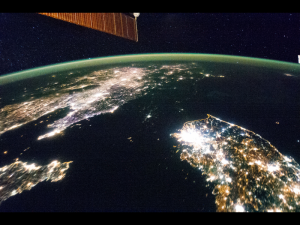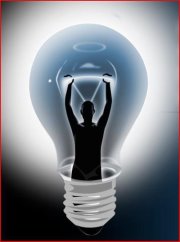Some Thoughts on Human Achievement Hour
Some thoughts on marking 2014’s Human Achievement Hour (HAH).
HAH was first suggested by my good friend Fred Smith of the Competitive Enterprise Institute as an annual celebration of the inventions and innovations that have enabled ever increasing numbers of people to live in better and better living standards.
Those innovations and inventions range from the technological to the social, from the legal to the cultural, from the political to the economic but are rooted in one thing: freedom.
As CEI’s website (www.cei.org/hah) explains:
Human Achievement Hour (HAH) is a celebration of individual freedom and appreciation of the achievements and innovations that people have used to improve their lives throughout history. To celebrate Human Achievement Hour, participants need only to spend the hour from 8:30 pm to 9:30 pm on March 29 enjoying the benefits of capitalism and human innovation: Gather with friends in the warmth of a heated home, watch television, take a hot shower, drink a beer, call a loved one on the phone, or listen to music.
On Saturday, March 29, 2014, from 8:30 pm to 9:30 pm, some people will shut off their lights and spend an hour in darkness as a symbolic vote against global climate change. Observers of Earth Hour want world leaders to “do something” about pollution and energy use. What this means is that they want politicians to use legal mandates and punitive taxes to prevent individuals from freely using resources, hindering our ability to create the solutions and technologies of the future. Instead, the Competitive Enterprise Institute asks you to spend that hour with your lights *on* in celebration of Human Achievement Hour.
HAH is an annual event meant to recognize and celebrate the fact that this is the greatest time to be alive, and that the reason we have come is that people have been free to use their minds and the resources in their environment to experiment, create, and innovate. Participants in HAH recognize the necessity to protect the individual persons from government coercion, so that we may continue innovating and improving our lives and the world around us.
What HAH reminds us of is that what underlies wealth creation and much technological revolution is human freedom – and especially that freedom of the extended market order, founded upon the respect for individual rights and the rule of law. It also reminds us of how the state is a poor servant; too often it becomes master, destructive or a significant hindrance to the institutions of wealth creation and human creativity.
I’ve never really “got” the whole switching the lights off thing of Earth Hour. To me, switching-off the lights symbolically pitches us all into the darkness of poverty, with the ideal outcome of Earth Hour – at least for some – appearing to be the darkness forced upon North Korea but imposed across the globe. Fortunately, unlike the North Koreans, if we choose to mark Earth Hour, we still retain the freedom to turn the lights back on again.

NASA’s description of the photo makes it quite apparent that the darkness (and poverty) of the North is no accident but the direct consequence of the Communist regime’s denial of freedom. Poverty and darkness have been consciously chosen and pursued by North Korea’s leadership; South Korea’s economy and GDP per capita has boomed since the Korean War – because it embraced free markets and individual liberty.
ISS038-E-038300 (30 Jan. 2014) — Flying over East Asia, an Expedition 38 crew member on the International Space Station took this night image of the Korean Peninsula. Unlike daylight images, city lights at night illustrate dramatically the relative economic importance of cities, as gauged by relative size. In this north-looking view, it is immediately obvious that greater Seoul is a major city and that the port of Gunsan is minor by comparison. There are 25.6 million people in the Seoul metropolitan area-more than half of South Korea’s citizens-while Gunsan’s population is 280,000. North Korea is almost completely dark compared to neighboring South Korea and China. The darkened land appears as if it were a patch of water joining the Yellow Sea to the Sea of Japan. The capital city, Pyongyang, appears like a small island, despite a population of 3.26 million (as of 2008). The light emission from Pyongyang is equivalent to the smaller towns in South Korea. Coastlines are often very apparent in night imagery, as shown by South Korea’s eastern shoreline. But the coast of North Korea is difficult to detect. These differences are illustrated in per capita power consumption in the two countries, with South Korea at 10,162 kilowatt hours and North Korea at 739 kilowatt hours.
CBS also has a good write-up and video shot from the ISS as it orbits over North Korea, here.
